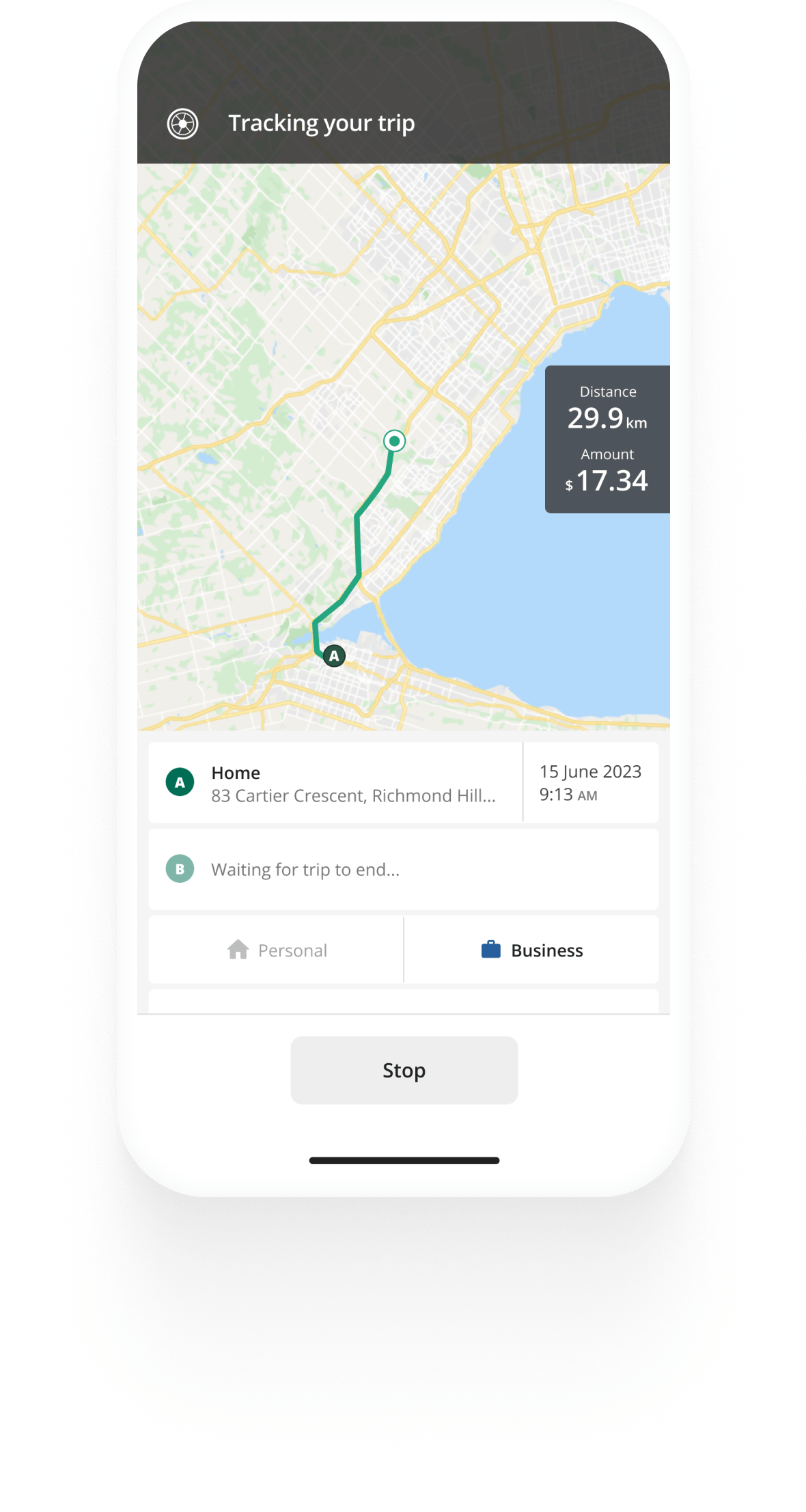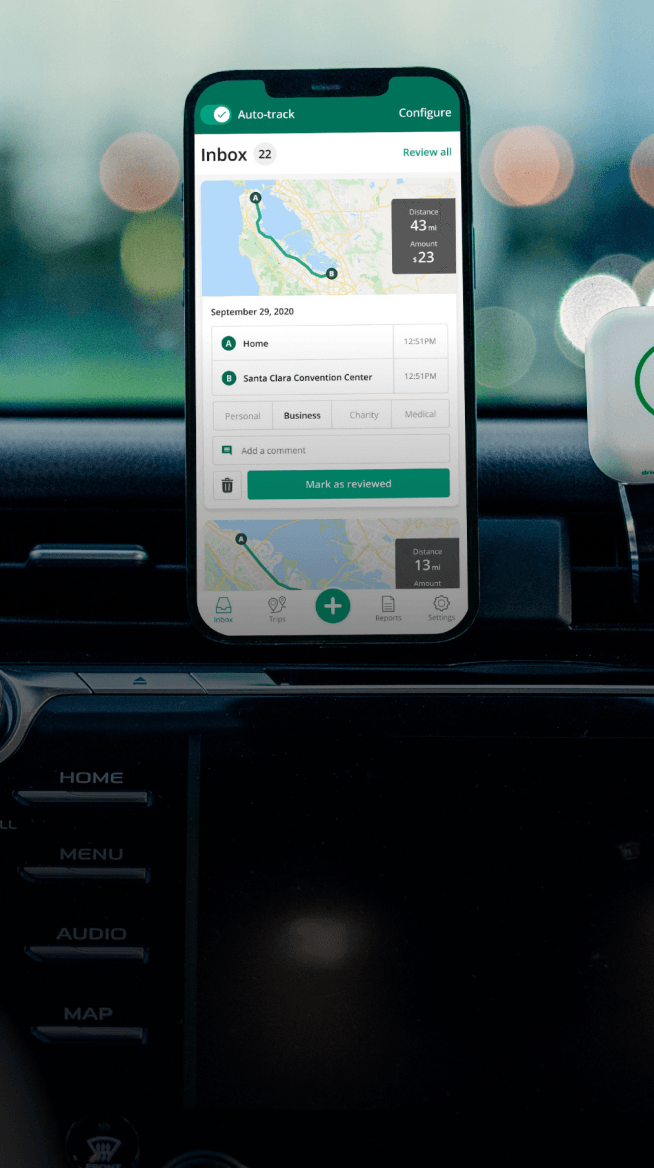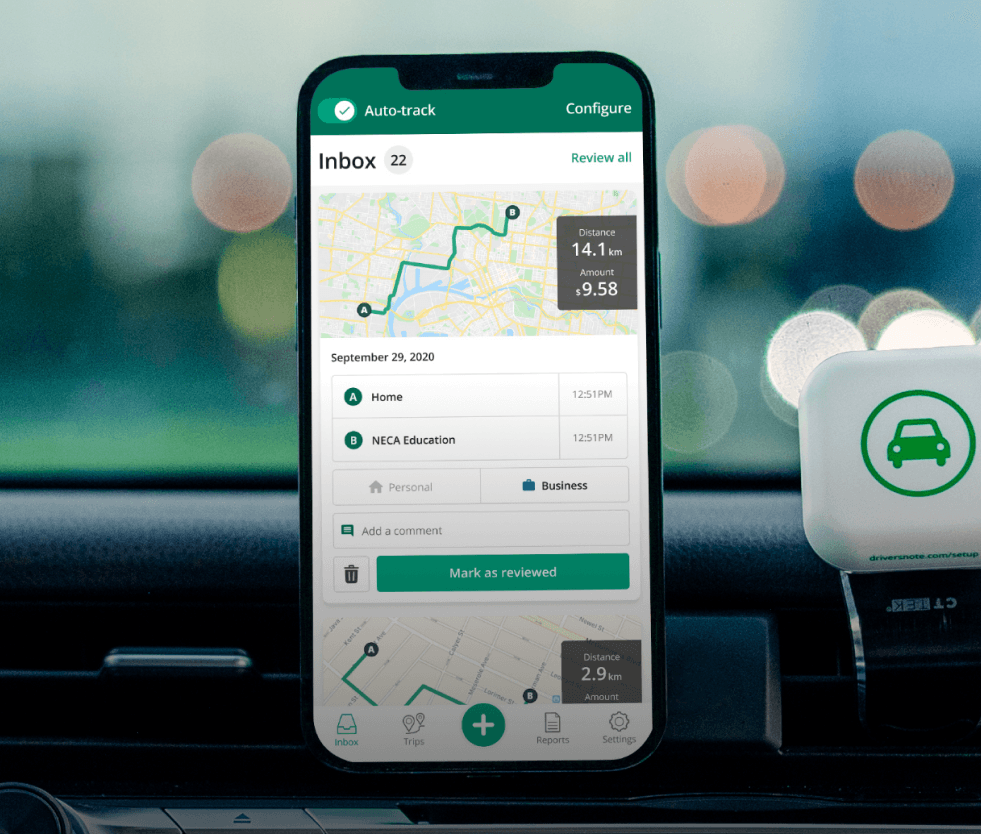Track mileage automatically
Get started
FAQ: The CRA Automobile Allowance In Canada
In this article
- What is the 2025 CRA automobile allowance rate?
- What was last year’s automobile allowance?
- Are the CRA automobile allowance rates the same for all employees?
- How do I get my automobile allowance from the CRA?
- Mileage logging
- Should I provide an automobile allowance to my employees?
- What is the best way to track my kilometres to receive an automobile allowance?
- Do mileage tracking apps use the CRA automobile allowance rates?
- What is the 2025 CRA automobile allowance rate?
- What was last year’s automobile allowance?
- Are the CRA automobile allowance rates the same for all employees?
- How do I get my automobile allowance from the CRA?
- Mileage logging
- Should I provide an automobile allowance to my employees?
- What is the best way to track my kilometres to receive an automobile allowance?
- Do mileage tracking apps use the CRA automobile allowance rates?
Understanding mileage logging, allowance rates, and CRA guidelines can be quite confusing.
Many of our users often share their doubts about the regulations, automobile allowance rates, and the requirements for accurate logging. In this article, we will tackle some of the most frequently asked questions in Canada.
What is the 2025 CRA automobile allowance rate?
The mileage rate for business mileage incurred in 2025 is 72¢ per kilometre for the first 5,000 kilometres driven, 66¢ per kilometre. Read more about the 2025 business mileage.
The CRA automobile allowance rate is utilized by employers to reimburse employees or provide an allowance for expenses incurred while driving for work purposes.


Track business driving with ease
Trusted by millions of drivers
Automate your logbook Automate your logbook

Automatic mileage tracking and CRA-compliant reporting.
Get started for free Get started for freeWhat was last year’s automobile allowance?
The automobile allowance rate for 2024 was:
- $0.70 per kilometre for the first 5,000km driven for business and
- $0.64 per kilometre driven for business after that.
- An additional $0.04 per kilometre in the Northwest Territories, Yukon, and Nunavut.
Are the CRA automobile allowance rates the same for all employees?
Yes, the CRA automobile allowance rate applies to all employees unless your employer decides to reimburse you at a different rate.
How do I get my automobile allowance from the CRA?
You don’t get the automobile allowance directly from the CRA.
-
If you're an employee, you can maybe get allowance from your employer.
-
If you're an employer, you decide whether to give a CRA-compliant automobile allowance to your employees.
If you use the CRA automobile allowance rate, the allowance (or reimbursement) you offer is tax-free.
Mileage logging
Follow the CRA rules, guidelines and advice to ensure your mileage logbook is compliant.
The requirements for compliance may differ depending on whether you are:
- An employer
- Self-employed or sole proprietor
- An employee
Vehicle logs for employers and teams
- Keep vehicle logs from employees (including trip date, purpose, destination, and kilometers).
- Retain payment records that detail how and when reimbursements were issued.
- If opting for the tax-free per-km method--and not the flat rate allowance--ensure that rates and distances comply with CRA’s reasonable allowance standards which is mentioned above.
If you are an employer and need a solution for your team, check out our Teams page.
How to keep a vehicle logbook if you're self-employed or a sole proprietor
As self-employed, you don’t receive a tax-free automobile allowance like employees might. Instead, you claim actual vehicle expenses, but only for the business-use portion.
The logbook proves how much of your driving was for business, which determines how much of your fuel, insurance, maintenance, and other vehicle costs you can deduct.
There are two ways to secure your mileage logging is sufficient to claim vehicle expenses with the CRA when you're self-employed: The full logbook method and the simplified method. Both require keeping receipts and invoices for car-related expenses throughout the year.
Learn more about how to claim vehicle expenses from the CRA as self-employed
Mileage logging requirements for employees
CRA states that employees should maintain a logbook that reflects their vehicle's use for business activities. But besides CRA requirements, your employer might have additional requests.
Each entry in the logbook should contain the following details for every business trip:
- Date of the trip: The exact day the trip occurred.
- Destination: The final location of the journey.
- Purpose of the trip: A short explanation of the trip's reason, such as meeting a client or participating in a business event.
- Number of kilometres driven: The total distance covered during the trip.
Additionally, employees need to document the vehicle's odometer readings at both the beginning and end of the fiscal year. If the vehicle is used for both personal and work-related tasks, it’s important to differentiate between the two, as only the expenses related to business use can be claimed. The CRA views commuting from home to a regular workplace as personal use.
Also dive into our mileage log requirements guide to figure out what you need depending on your particular situation.
To learn more about claiming medical mileage, see our article on medical travel expenses in Canada.
Should I provide an automobile allowance to my employees?
Employees generally expect to be compensated for work-related car expenses, whether they drive company cars or use their personal vehicles for business.
If your an employer, you can deduct vehicle reimbursements as business expenses. You should maintain mileage logs and supporting documents in case of a CRA audit.
If you reimbursed employees based on actual receipts — for example, for fuel or maintenance — you can also deduct those specific amounts, as long as they directly relate to business use.
For these reimbursements or allowances to be considered deductible and, where applicable, non-taxable to the employee, they must meet CRA’s criteria: the payment must be reasonable, it must be made specifically to cover business-related vehicle use, and you must have proper documentation to support it. I
n the event of an audit, the CRA will look for clear records showing how reimbursements were calculated, detailed mileage logs from the employee, and proof that the payments were actually made.
Many companies use an app for mileage tracking, and the majority of them use the CRA automobile allowance rate (while some allow you to set your own rate as well).
Employees save time by not having to keep mileage logs by hand, and it's the simplest method as it does most of the work for them. Using an app also assists your company in avoiding over-reported mileage claims and ensures that your employees receive what they are entitled to.
What is the best way to track my kilometres to receive an automobile allowance?
You can track your mileage manually by checking how much you have driven on your GPS or logging your odometer each time you drive. However, you can also use a mileage tracker app that automatically records your trips. The app allows you to spend less time dealing with mileage tracking and logging procedures. We believe that the best way to track mileage is with a mileage tracker app, but we encourage you to try different ways and see what best fits your needs.
Do mileage tracking apps use the CRA automobile allowance rates?
There are many mileage tracking app options for Canada, and most of them allow you to use the standard CRA automobile allowance rate or choose your own rate. A mileage tracking app also serves as a logbook, allowing you to log your trips and generate CRA-compliant reports. The best mileage tracking apps should include the following:
- The option to record your trips
- The option to categorize trips
- The option to create CRA-compliant mileage reports
- Automatic tracking of trips
If you have more questions, visit our CRA mileage guide, where you can find more frequently asked questions about mileage logging, receiving an automobile allowance, and using a mileage tracker app in Canada.

Tired of logging mileage by hand?
Effortless. CRA-compliant. Liberating.
Latest posts
Related posts
CRA Mileage Rate 2024
January 2, 2024 - 2 min read
The CRA announces 2024 rates for vehicle allowance: From January 1st, 2024, per kilometre rates will increase 2 cents over 2023.
Taxable Employee Benefits in Canada
April 7, 2025 - 10 min read
Which benefits do you offer your employees? A full list of the taxable employee benefits in Canada, and how you calculate their value.
FAQ About The CRA Automobile Allowance
April 7, 2025 - 5 min read
FAQ: What you want to know about automobile allowances and reimbursements as per CRA guidelines for businesses and employees.

